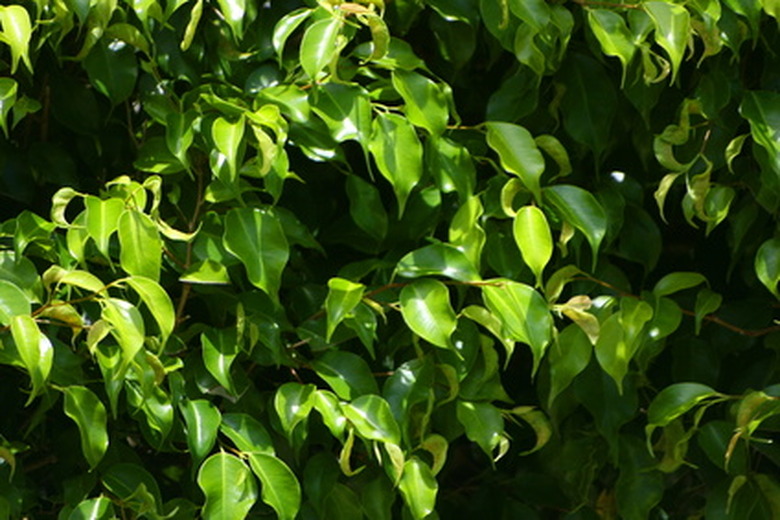How To Care For Ficus Benjamina Outdoors
Things Needed
- Watering tool
- Mulch
- Pruning tools
Ficus benjaminas can be grown indoors or outdoors, although they are hardy outdoors only in USDA growing zones 10B and 11. These trees are part of the fig family, and this particular ficus often is called the "weeping fig" because its long branches often will dip almost to the ground. Outdoors, ficus benjamina can grow to 60 feet tall with a canopy just as wide as its height. These hardy trees require only basic care.
Step 1
Expose the ficus tree to a minimum of six hours of sunlight, although it will grow in shade, partial shade or full sun.
Step 2
Water enough so that the soil is continually moist, especially if the tree is young. Water larger, established trees only during extended periods of drought, although they can tolerate short droughts. Make sure the the soil is well-draining, as ficus benjamina does not do well in soggy soil, which can rot the shallow roots of the tree.
- Ficus benjaminas can be grown indoors or outdoors, although they are hardy outdoors only in USDA growing zones 10B and 11.
- Expose the ficus tree to a minimum of six hours of sunlight, although it will grow in shade, partial shade or full sun.
Step 3
Protect young trees from frost with a 3- to 4-inch layer of mulch in the fall if cold weather threatens, or throw a blanket over it if the tree is small enough. Extend the mulch to the edges of the tree's canopy.
Step 4
Prune vigorously, cutting back by as much as 1/3 each year, even during the growing season, to increase the tree's strength.
Step 5
Monitor for scale insects, which commonly infest this tree and will cling to and coat the branches and twigs of the plant. Spray small trees thoroughly with insecticide if a severe infestation occurs.
Tip
Ficus benjamina features roots that dangle from the branches. They will take root if they touch the ground, eventually forming a solid wall of multiple trunks. Prune these away to prevent this. ISRs, or insect growth regulators, work especially well to control scale and also aphids. Neem and narrow-range oils also kill effectively, but repeated applications may be needed every month or so.
Warning
Ficus benjamina trees are fast-growing, with shallow roots that can lift sidewalks and asphalt.
